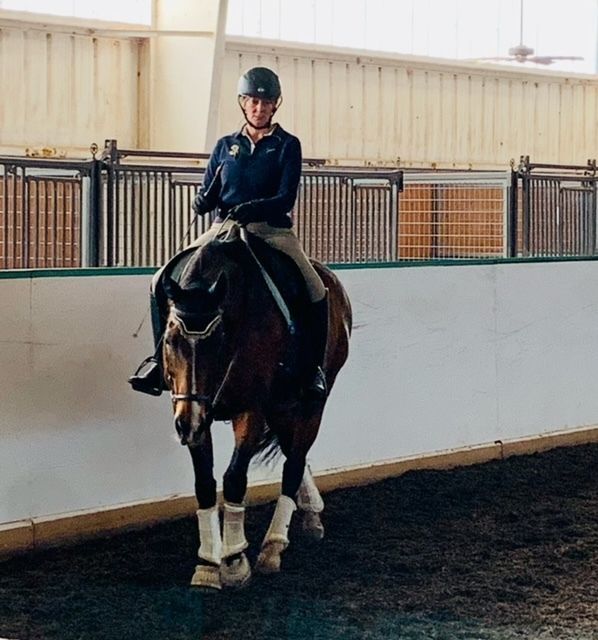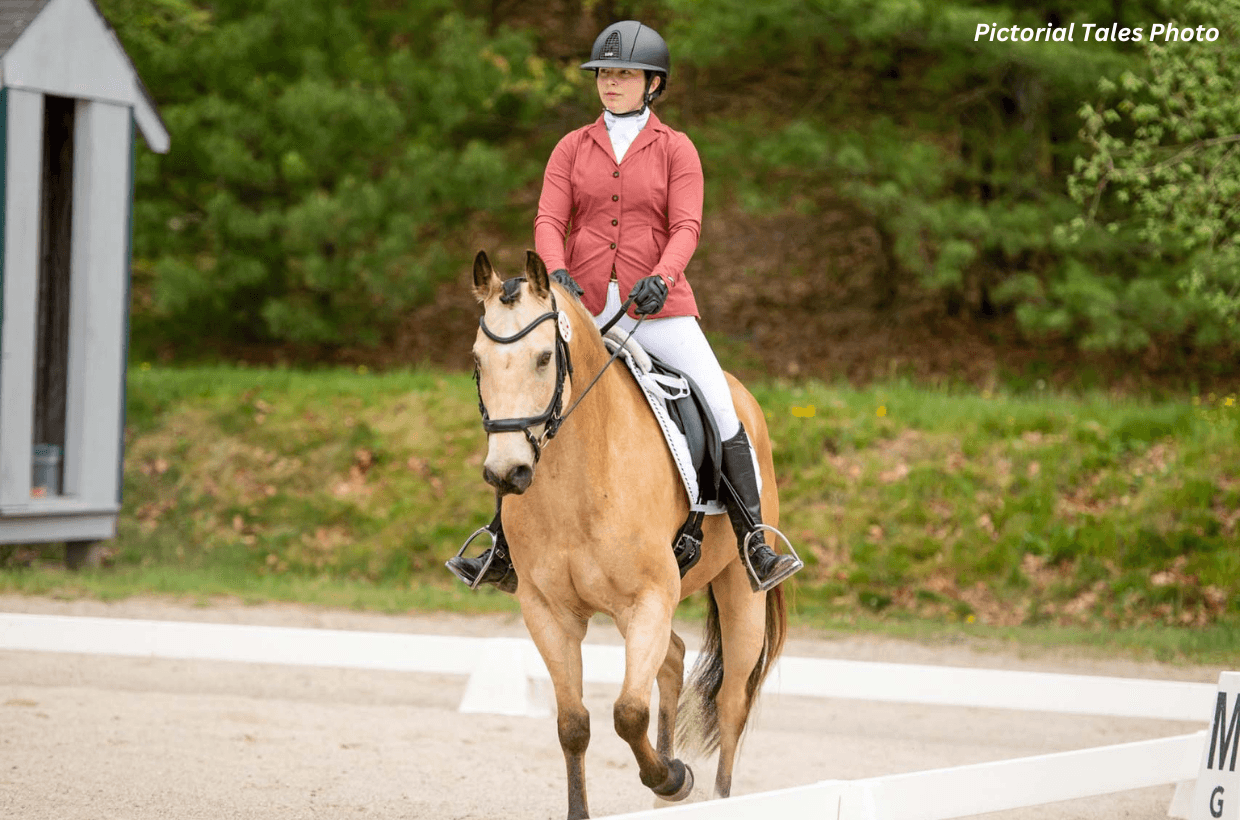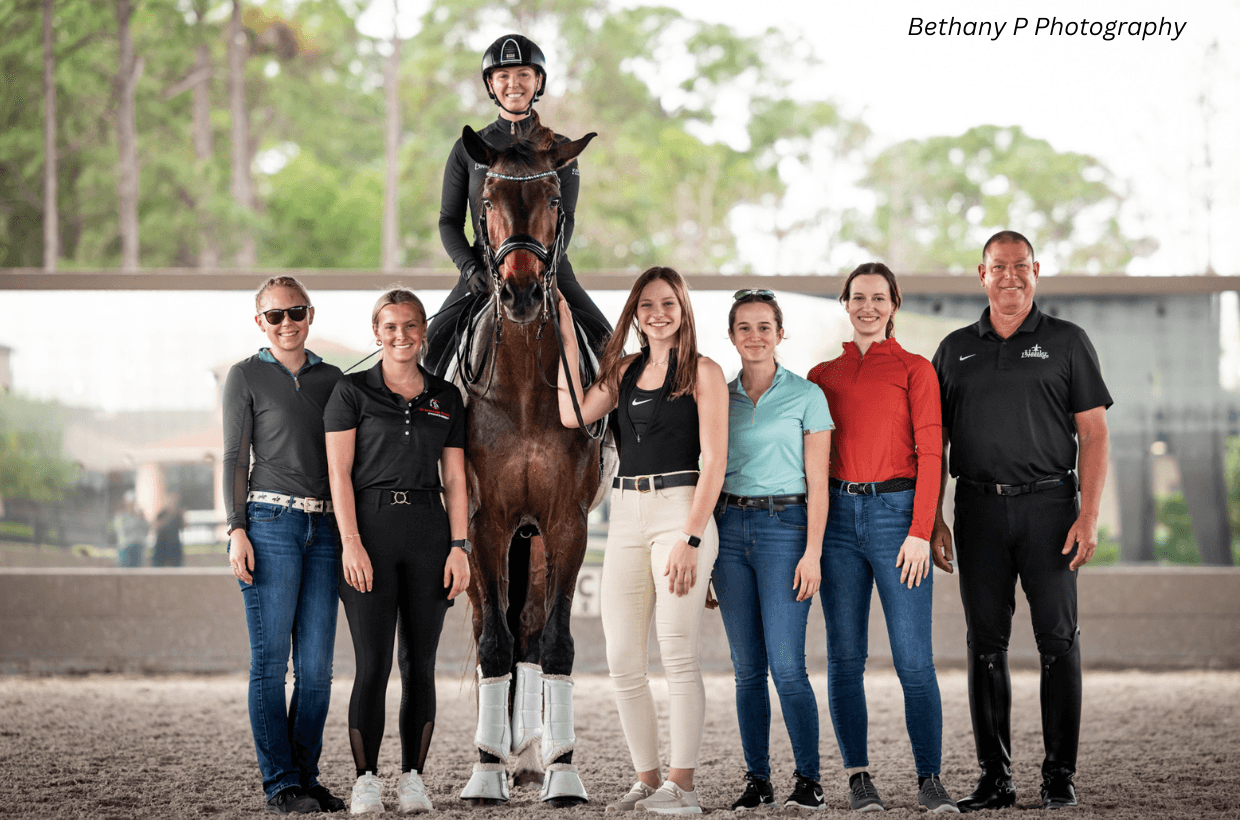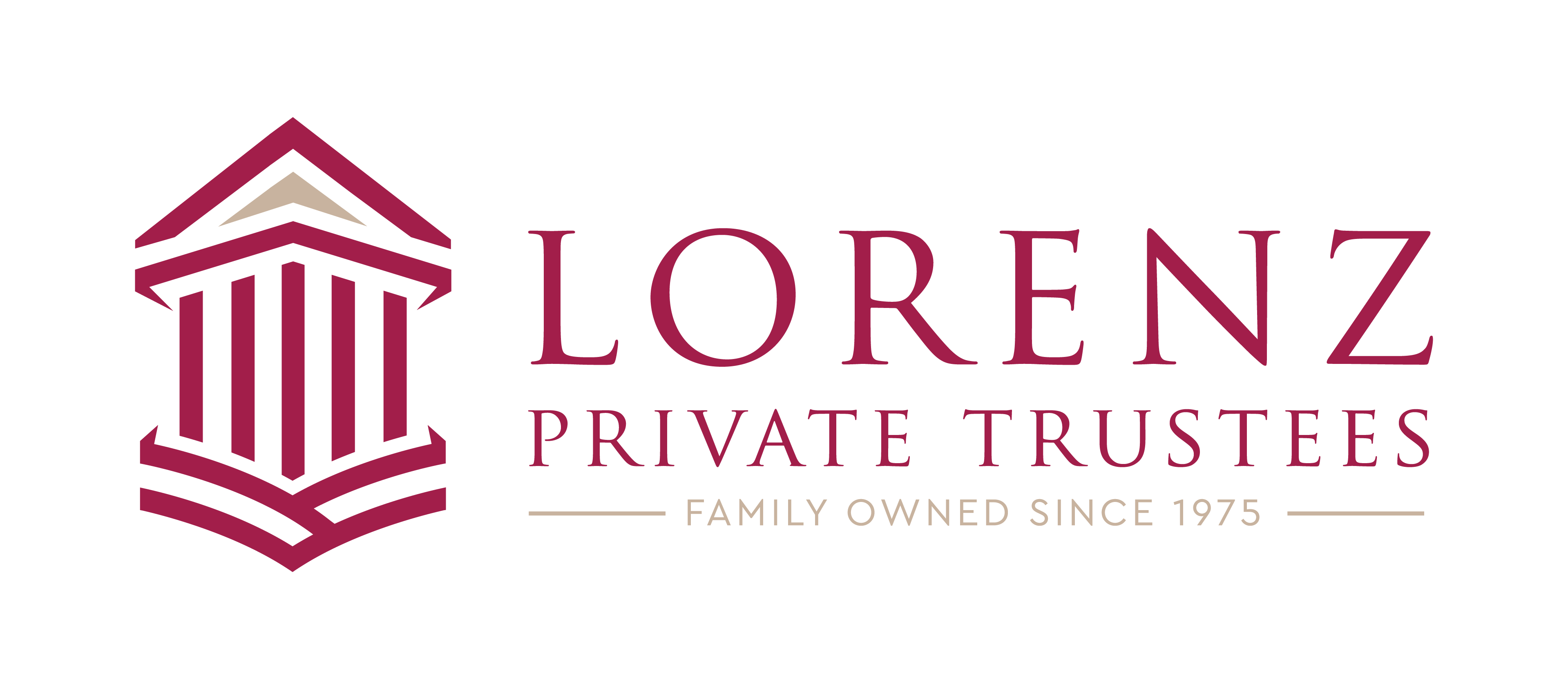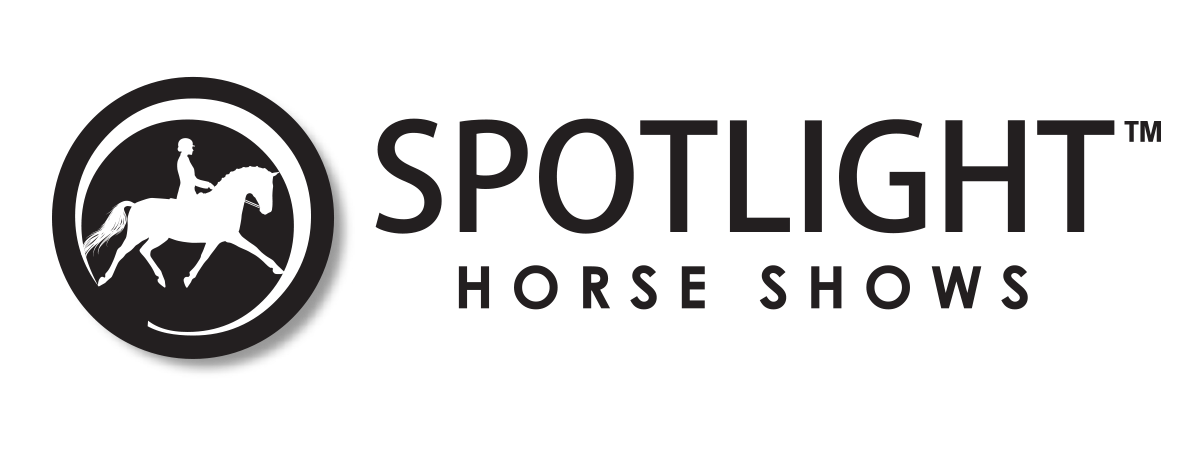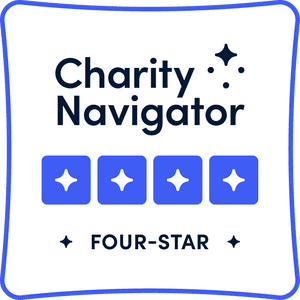Gifted Fund for Adult Amateurs Grant Recipient: Holly Luke (Region 9)
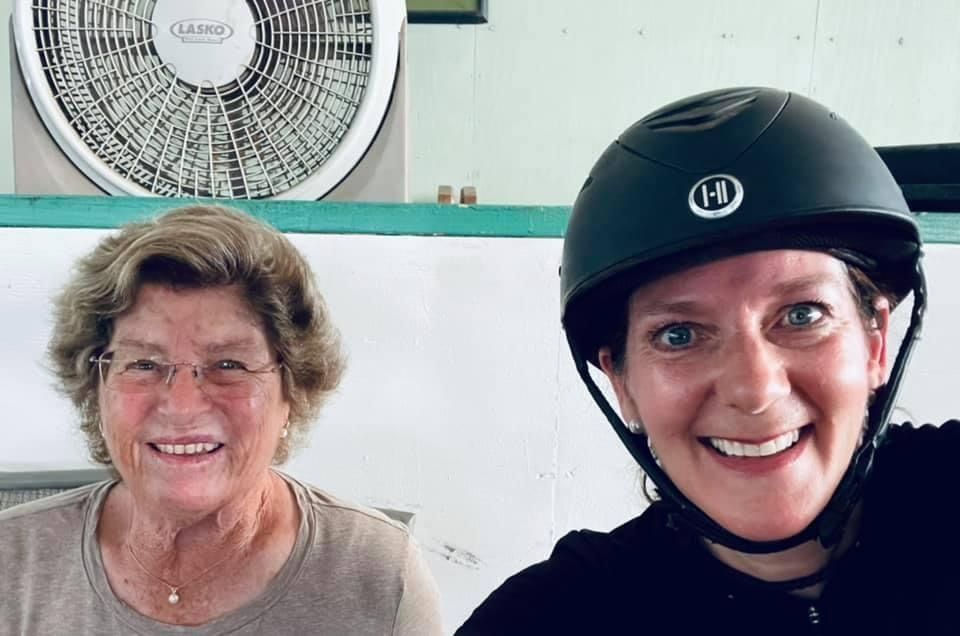
“Top 10 Things I Learned from Melissa Creswick as a recipient of The Dressage Foundation's Gifted Fund Grant for Adult Amateurs”
1. Safety First - I was more than thrilled when I received the email that I had been chosen as a recipient of The Dressage Foundation Gifted Fund Grant for Adult Amateurs. I had this incredible plan with spring and fall sessions to prepare me for the show season, as well as set me up for winter work. Our first week was planned in Wichita, Kansas. I had been approved to take the week off from work, had cleaned and packed the trailer and I was prepared for the haul. On day one of “vacation," I wanted to get in one last ride on Windy prior to hauling to Kansas. I was at the end of my ride when I felt it was imperative to half pass in order to change direction and work our exercise in the other direction (even though the neighbors were in an intense game of basketball). As I was half passing, and a basketball was coming our way, Windy went left and I went right. My foot got stuck in the stirrup and I heard and felt the snap. As she continued left and I was trying to organize myself, I somehow managed to get my foot loose.
Instead of hauling to Kansas, I hauled myself to the doctor. I learned I had suffered significant trauma to my right foot, including four broken bones, and would be non-weight bearing for 12 weeks. I ended up being out for six months. After the accident, I became obsessed with what happened, why it happened, and how I could minimize my risk in the future. Through my research, I learned about the correct width of stirrups, recommendations on the best safety stirrups, the importance of not riding in paddock boots that have a thick, non-leather waffle sole and contain a boxy toe, and the importance of the date stamped on helmets. In the end, I purchased new stirrup leathers, Acavallo safety stirrups, DeNiro boots, and a new helmet.
2. Enjoy the Journey - Even while I couldn’t ride, I spent my time reading, learning, and editing my freestyle. There is so much that can be done that is not in the saddle. I learned about equine massage and proper groundwork which allowed me to connect with my horse on a totally different level.
After six months off, I was back in the saddle and started my training week with Judge Melissa Creswick. Here's what I learned IN the saddle:
3. Horses Mirror our Emotions - Melissa not only gave me instruction, she saw the opportunities in me. “Don’t hover, don’t micromanage. You abandon her when things get difficult. Slow down, you have time. Quit reacting to her, change the reaction to a response. Ride the horse, not the environment. Quit taking her temperature, just ride. You have to be the alpha; she will test you every time and the work has to be easier than the resistance.”
4. Start with Why - We don’t do exercises to just do exercises. You must know why you are doing the exercise in the first place. What are you trying to solve? Warm-ups should be utilized to access what you have and to gather information. Is your horse bending? Is she on the aids? Does your inside leg work? Based on the information you receive, you can then decide what exercise your horse needs to take the training forward.
5. Listening is a Vital Part of Communication - The horse must first listen before you can ask for more forward or sideways. She must be accessible. “The horse is to come to you, not you going to her. The horse must hear the aid for forward and listen in a quiet way.”
6. Provide Clarity - If the horse is bulging out onto your leg, your leg must become active. (Get off my leg and do it now.) In the forward, no nagging. "It’s not about keeping her going, it's about when your leg goes on she is to immediately go forward. In the changes, sit down and be direct." I need to provide a clearer aid and expect a clear response.
7. Expectations - Most folks put limits on themselves by not having high enough expectations. There is no compromise in training. Expect it to happen and quit putting a value on the "what if" or things that have not yet happened. "This horse has more than you are asking. Don’t cope with what she gives you, create what you want."
8. Own it - "Is this your trot or her trot? Did you ask for that?" Don’t nag every stride, make something happen.
9. Responsibility - Hold the horse responsible for going forward, and for self-carriage. “You are working much harder than I would. When you put your leg on, you must have an immediate response. If she’s not ahead of your leg, what’s the point?"
10. Power of your Core or "Belly Wall" - Don’t pull your hands to your belly, push your belly wall towards your hands. Carry the horse with your belly, not your hands. Utilizing your belly in this way creates an “H” in your body, allowing the movement of the horse to flow versus a “V” when you suck your stomach in creating a tight buttock and back blocking the movement of the horse. “Legs wide, belly out, and she is to carry you.”
Bottom line - When we connect in a quieter way with the horse, this equals security. Once we have security, we can then ask for gaits and more forward. I need much more forward and back in my work to get the engagement needed to progress up the levels.
I am humbled and grateful to have received this grant which allowed me to continue my education. This opportunity has presented a way to stay connected to Melissa with virtual lessons, which are already planned for the future. I’m looking forward to the consistency and accountability to ensure we continue to progress. Thank you for your generosity and for making such an impact on our journey.
